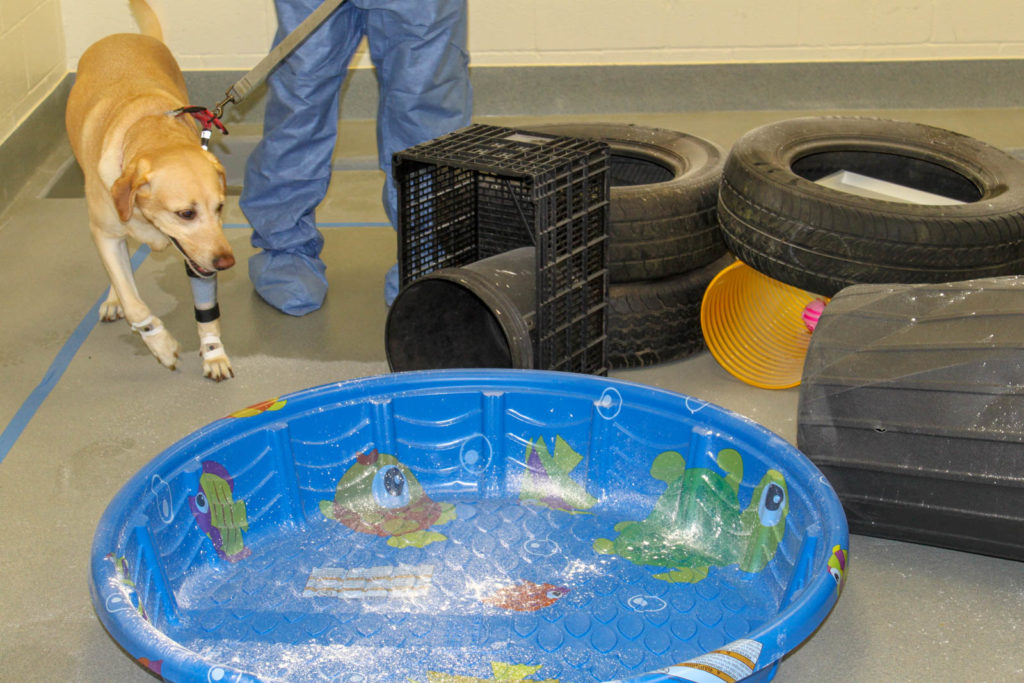
Urban search and rescue (USAR) dogs are a familiar member of most emergency response teams. We often see footage of these dogs working in difficult environments after major disasters to help find and rescue survivors and recover remains. A search and rescue dog must complete many months of rigorous training to be certified to complete such missions, making them valuable both in terms of the role they play on their teams as well as the investment in training and time they represent. In the event of an emergency that includes some form of radiological contamination, such as after the detonation of a radiological dispersal device, for example, we can imagine these dogs and their handlers being called in to play a vital role in response and recovery.
Texas Task Force 1, one of the 28 federal teams under the Federal Emergency Management Agency (FEMA)’s National Urban Search and Rescue System, regularly conducts mobilization exercises at the Texas A&M Engineering Extension Service’s Disaster City facility, where Dr. Craig Marianno, deputy director of the Center for Nuclear Security Science and Policy Initiatives (NSSPI) and an assistant professor of nuclear engineering, also leads several radiation detection exercises every year. When Marianno and his team were called to participate in emergency response exercises involving a radiological component for one of these Texas Task Force 1 mobilization exercises, the question came up of how to handle the USAR dogs after they had been deployed to a site with potential contamination. While their human counterparts wore personal protective equipment and followed detailed guidelines and procedures to contain potential contamination, little to no guidance existed for how to protect these important and valuable animals.
Marianno explained, “My gut told me the dogs would not experience any health effects after working in such a contaminated environment. However, I didn’t know and couldn’t give an informed opinion. These dogs are not only extremely valuable because of the training they undergo. They are team members. To their handlers, these dogs are family members. We hope our work will allow USAR teams to make informed decisions about a canine’s use in a radiological contaminated environment.”
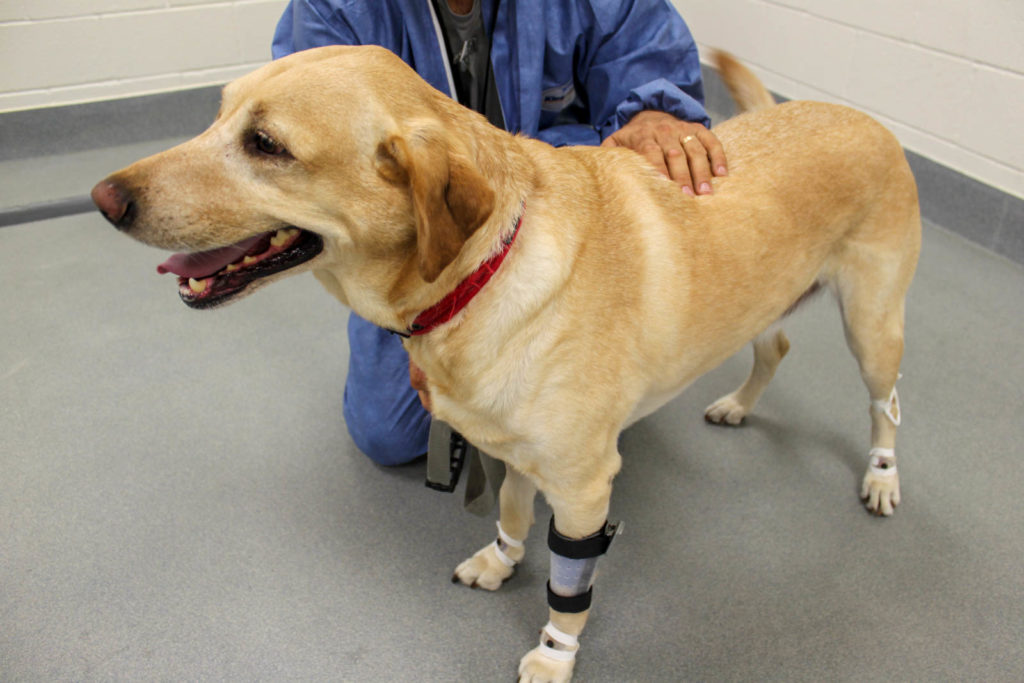
According to Katie Cook, a NSSPI graduate student working with Marianno on the USAR dog studies, “USAR dogs are an essential emergency response component, where each dog can perform the equivalent work of 20 to 30 people.” “However,” she noted, “Should any of these types of radiological events occur, the handlers of these dogs would have a difficult choice to make as there are little guidelines and protective equipment that could be utilized by USAR dogs in this type of environment.”
Marianno wanted to give the handlers more information when deployed in these sorts of environments so that they would be able to make more informed decisions regarding how their dogs are used in these areas. His student Jose Trevino began working with the Texas A&M University College of Veterinary Medicine to determine the radiation doses USAR dogs received in a scenario with a contaminated environment. Trevino computed the external and internal dose rate conversion factors along with calculations of internal dose rate conversion factors and compiled these into a tool for USAR dog handlers called FidoFRMAC, which also has the ability to import data from atmospheric dispersion models. FidoFRMAC allows a user to select from a group of radionuclides and get visual representations of the dose rates resulting from the contamination.
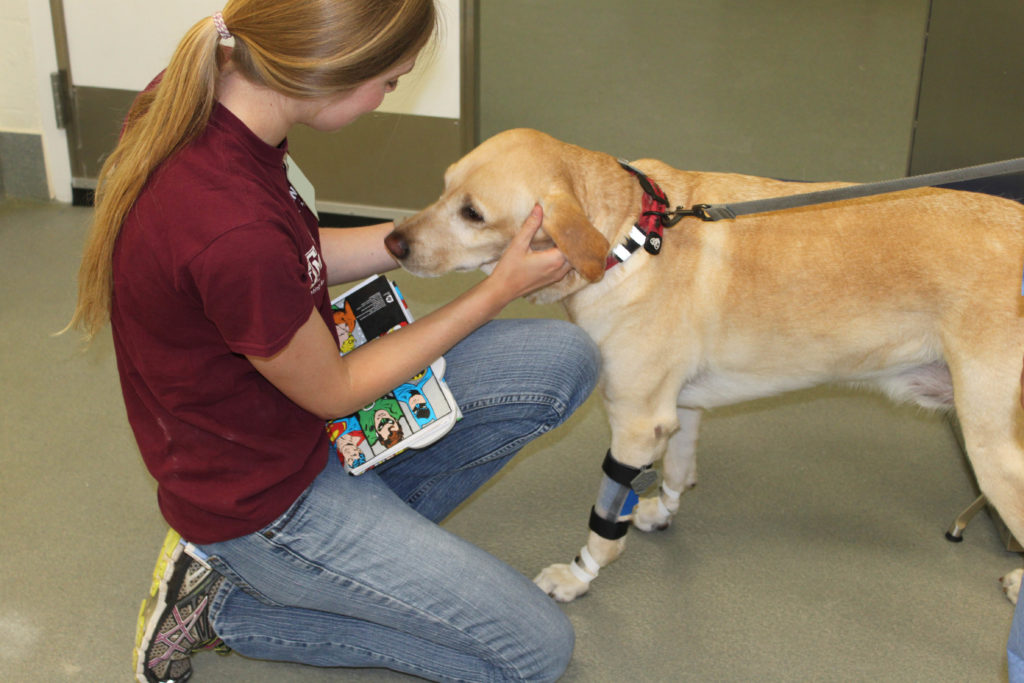
Cook then undertook an experiment to simulate a radioactive environment “safe enough for a dog to participate in but strong enough to create detectable contamination.” According to Cook, “This would allow researchers to gain insight where contamination may be internally deposited if a USAR dog took part in a real-world contamination event.” Fellow graduate student Miles Chen joined the experiment to analyze the dose of the USAR dog handler who would go into a contaminated area, as well as that for an individual mixing and spraying the contaminant as part of a dispersal simulation.
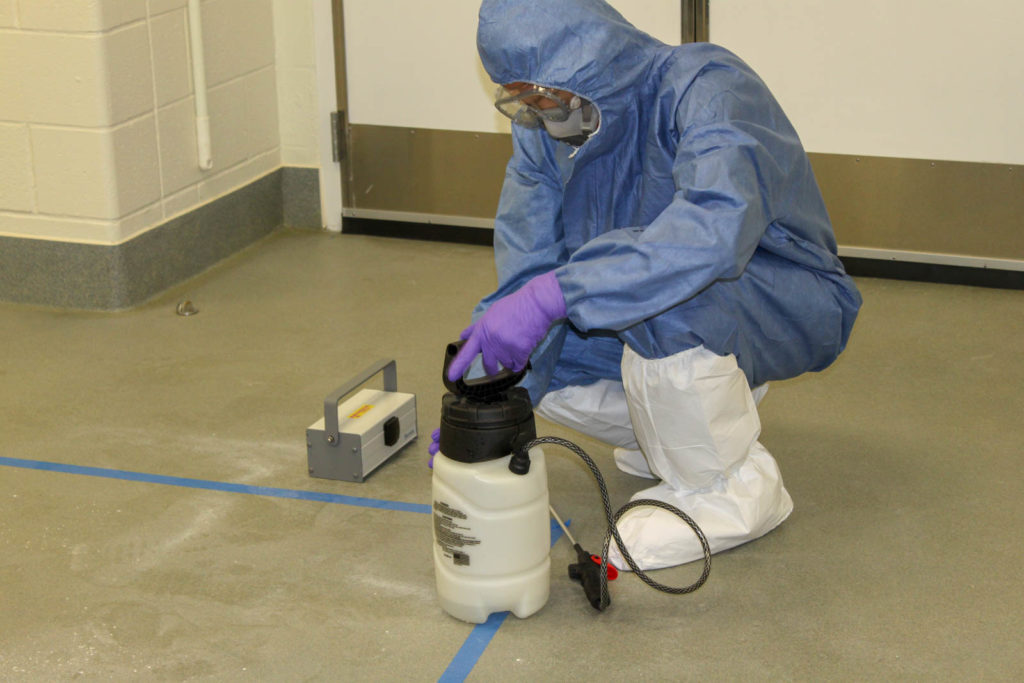
For this study, Chen sprayed a 9.29 m2 area with 200 MBq of Fluorine-18, a short-lived radioisotope that decays to a stable isotope of oxygen, while recording his dose. A dog then executed minor search activities in this contaminated area.
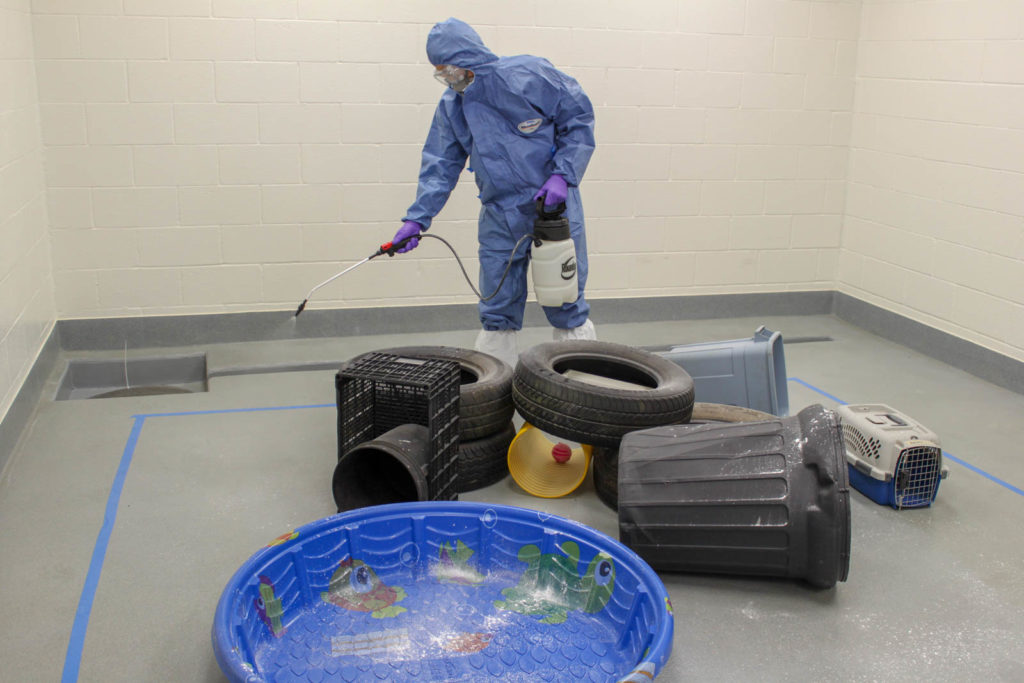
As for their test subject, Marianno chose to use his own dog, a yellow lab named Ash, to conduct the experiment. He wanted to show that the health risks of doing simulations with short-lived radioisotopes were minimal. Wearing personal protective equipment, Marianno led Ash through the contaminated area, and Chen also recorded his dose as a dog handler.
Chen customized an assessment tool that was first developed by NSSPI graduate Lainy Cochran, along with the MicroShield dose assessment program, to model the dose of personnel involved in the exercise. Then, he utilized actual dosimeter readings and other analytical methods to validate the tool. Cook localized and quantified both internal and external contamination from the dog using a positron emission tomography (PET) scanner.
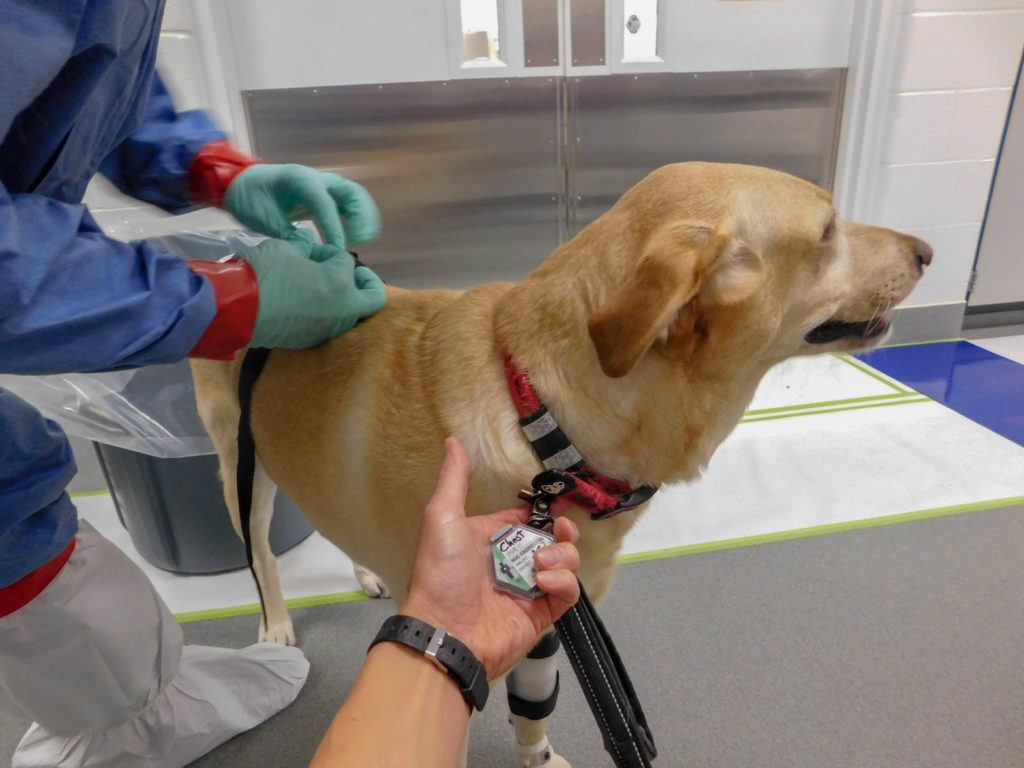
Chen said, “The logistics required to create the opportunity of experimenting with actual unsealed sources necessitated the incredible dedication of a great team of people.”
The experiment itself was an orchestration of a team comprised of people from many groups across the Texas A&M campus, from radiation safety officers and medical imaging experts to animal care and use and human research protection reviewers and the many members of Marianno’s research team who helped with setting up the experiment and recording the data.
According to Chen, the team consisted of “people with the vision and desire to design impactful research which will help protect our emergency responders, including search and rescue dogs.”
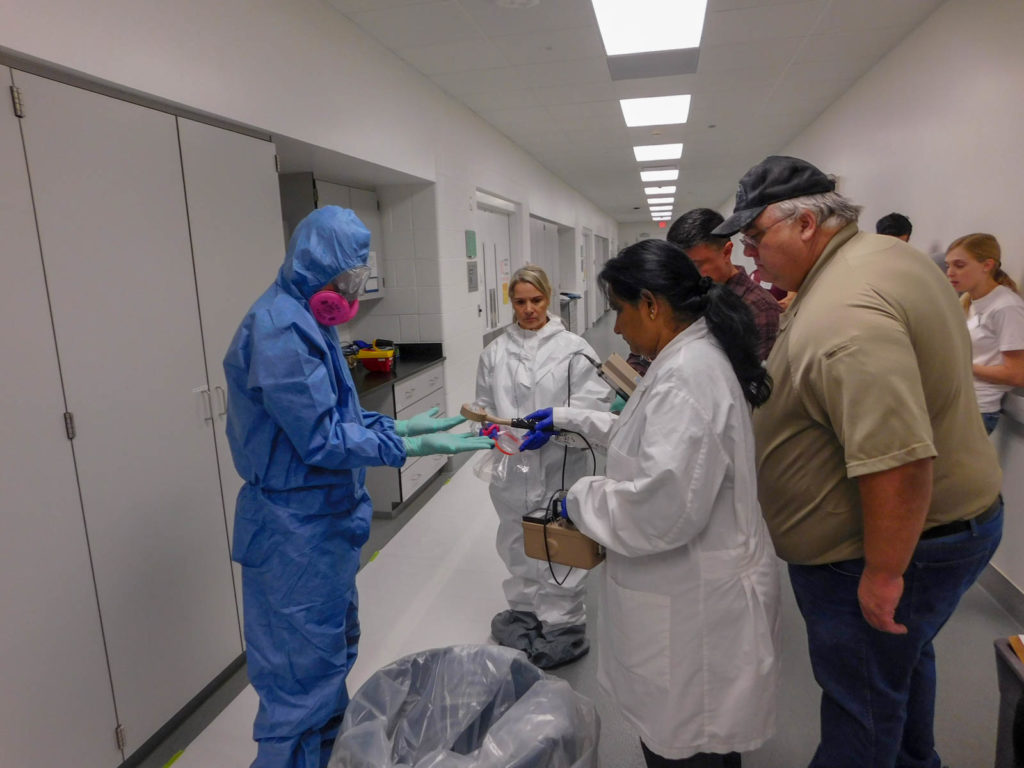
Katie Cook successfully defended her Master’s thesis on this topic in December of 2018 and will be graduating in May 2019. Cook received her bachelors of science degree in 2014 from Georgia Institute of Technology in Nuclear and Radiological Engineering with a Chinese minor. After graduating, she joined Emerson Electric in their “Engineers in Leadership” program before beginning her graduate education with NSSPI. She is currently working at the Y-12 National Security Complex.
Miles Chen will be defending his Master’s thesis soon and graduating in August of 2019. Chen is a captain in the U.S. Air Force. He earned a B.S. in biology from the University of Illinois at Urbana-Champaign in 1996, a B.S. in mechanical engineering from the University of California at Irvine in 2008, and an M.D. from the University of Minnesota Medical School. Prior to joining NSSPI, he served as an installation radiation safety officer with the U.S. Air Force’s Kunsan Air Base in South Korea.